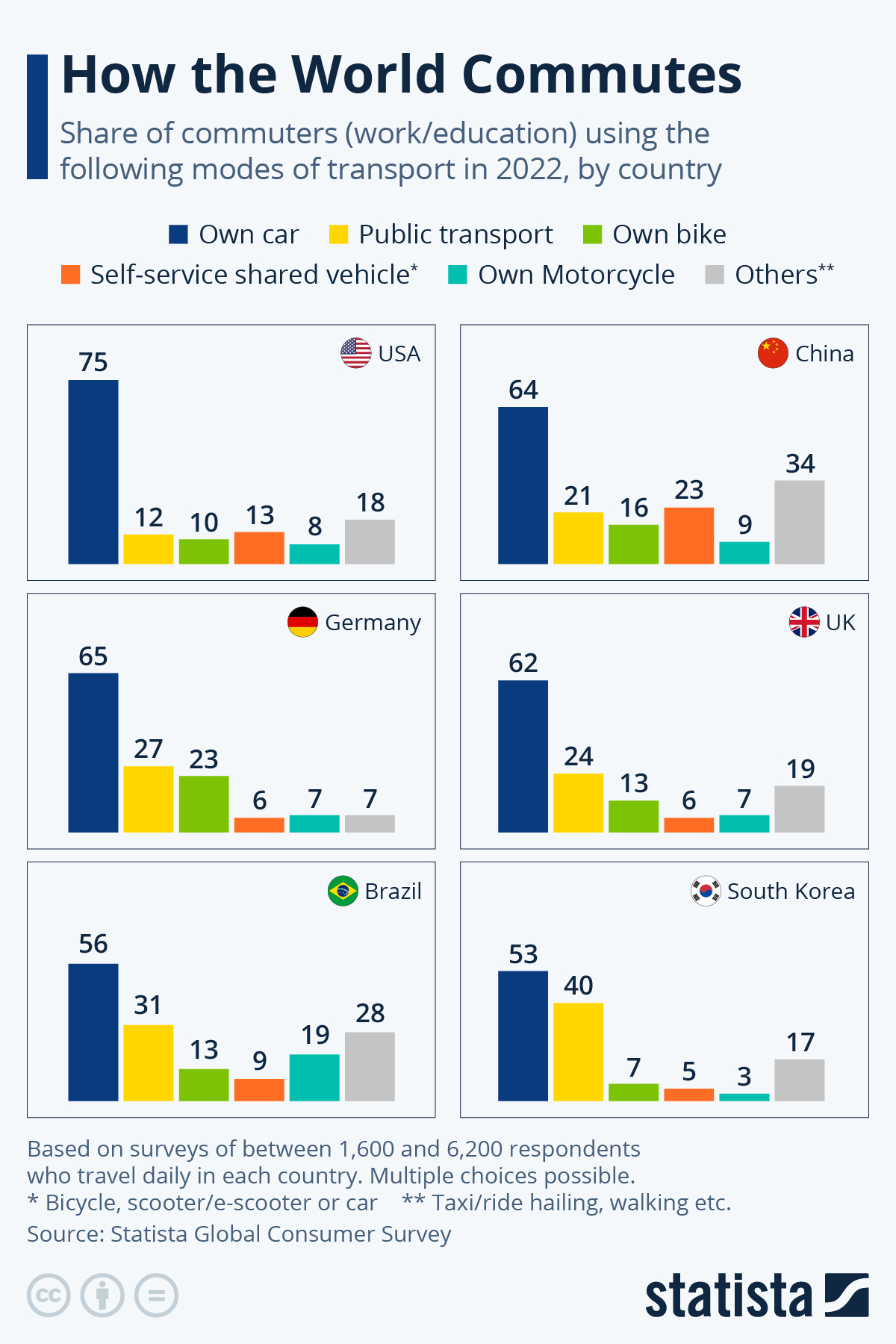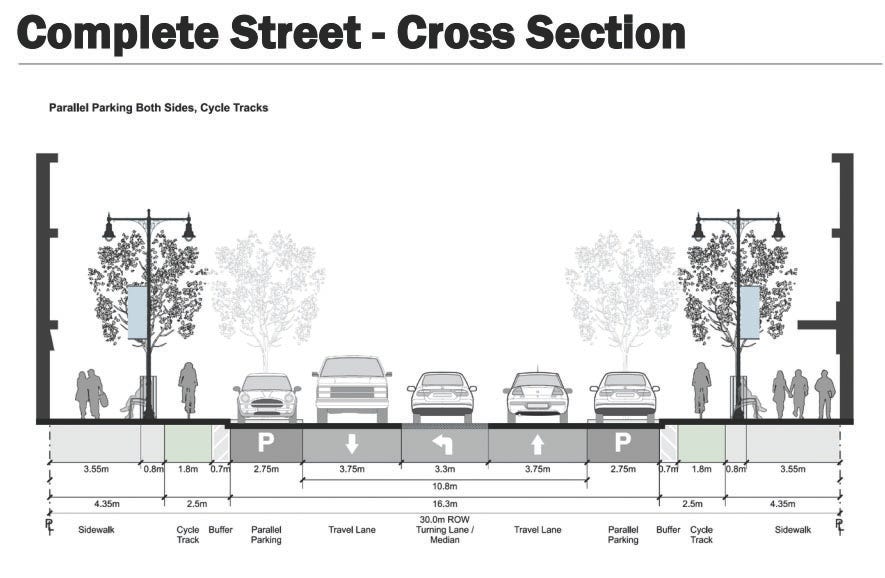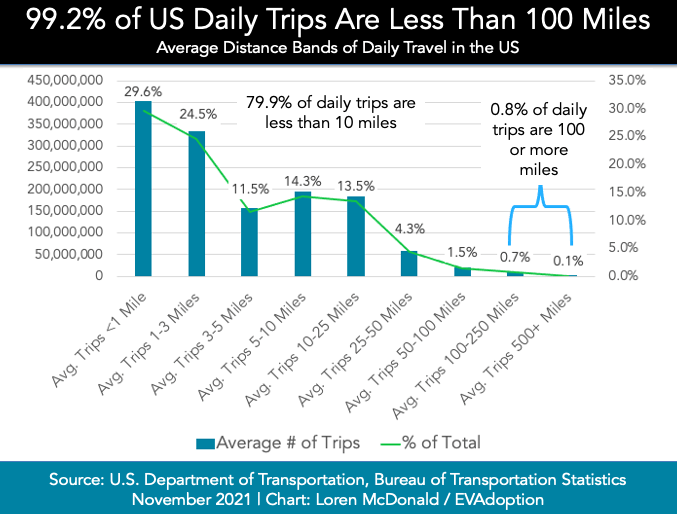I believe that we are living in a crisis of imagination!
We’re stuck in old mental models, narratives, and ways of thinking, so even when we attempt to think differently or creatively, the results are…modest and average. And that’s because all of our thinking remains stuck inside the box of the old narrative.
But I am hopeful! Because many of these old mental models are increasingly breaking down and, therefore, opening up new opportunities to think differently.
Today, let’s examine this narrative change using the example of car-centricity. My goal here is to show you the amazing things that are possible when we break free from the old way of thinking and doing. So, we’ll look at:
- The Dominant Narrative
- The Dominant Imagination Space
- The Breaking Down Of The Old Narrative
- How A New Narrative Forms
- How A New Imagination Space Opens Up
The Dominant Narrative: The Street Belongs to Cars
We’re currently living in a world that is dominated by one particular mode of transportation: cars ?.

When we think of a street, we usually think of an asphalt street with a huge part (e.g. two or three big lanes) for cars, parking spaces for cars on each side, and a smaller part that’s reserved for pedestrians (and maybe bicycles) on each side as well. This is normal to us – so normal indeed that we mostly do not even think about it!

When we think of the cultural rules and power structures related to this narrative – “the street belongs to cars” –, we see that pedestrians (including kids) have less of a priority and, therefore, must surrender or subordinate themselves to cars.
And while cars have their own road safety rules as well, they’re still in a dominant position. I mean, it’s not like there are just a few car crossings and big, spacious pedestrian lanes. It’s the other way around. Kids have to fit into streets built for cars, cars do not have to fit into streets built for kids.
What’s more, other ancillary domains change their shape, aligning more and more with the dominant narrative. The so-called Miracle Mile, for example, is a storefront and street design that first appeared in Los Angeles during the 1920s but then was applied across the US and many other regions:
“Developer A.W. Ross explicitly designed its storefronts to be viewed at 30mph, creating in the process an entirely different experience of the city and its streets. While these commercial/automobile strips are now ubiquitous in the U.S. and abroad, nearly a century ago they were a revolutionary development.”
Today, we, therefore, have car-dominant cities or cities (especially “new” ones) designed primarily for one mode of transportation: cars.
I don’t want to go too much into this, but within this narrative, there are, of course, also several sub-narratives: cars = freedom, cars = masculine power, cars = convenience, cars = (for & by) people products, etc.
The Dominant Imagination Space
All of the above has consequently cultivated (with an emphasis on ‘cult’) and only strengthened the dominant narrative that the street belongs to cars, and it has shaped an imagination space that’s highly focused on the car.
Consequently, we’ve seen tremendous innovation in automobile technologies in the last 100 years. Today’s most advanced cars can (almost) drive by themselves, are extremely fast, very comfortable (including integrated seat massage, heating, and entertainment systems), and remarkably safe for those sitting inside.
In liaison with car technology, we’ve also built massive infrastructure designed for cars: new types of bridges, tunnels through massive mountains, underground highways, roads through forests and neighborhoods, etc. And in both domains (automaking and car infrastructure development), a massive ecosystem of supplier and ancillary industries developed.
All of these developments aren’t some sort of “natural” part of humanity’s advancement. They are the result of focusing on a very specific narrative!
On car infrastructure, here’s an eye-opening example: Everyone always focuses on the fancy round Apple HQ. Nobody looks at the much bigger and uglier building next to it, which is – you guessed it – the car parking facility for Apple’s employees.
The Breaking Down Of The Dominant Narrative
In recent years, the narrative that “the street belongs to cars” has begun to break down. A key reason for this is a growth in awareness of the dominant narrative, in the first place. The dominant status of the car, and therefore the de-prioritization of other modes of transport and pedestrians, has become more and more apparent and consequently questioned:
On top of that, myths regarding the car and its benefits are being debunked: https://fortune.com/2016/03/13/cars-parked-95-percent-of-time/

55% of daily vehicle trips are less than 3 miles
And the structural problems are brought into the spotlight. For example:
- the high CO2 emissions of this mode of transportation,
- the air pollution caused by cars and its severe consequences,
- that more infrastructure for cars leads not to less but more traffic,
- that cars are getting bigger and bigger (so-called autobesity),
- the general inefficiency of this mode of transport compared to others, and
- the system of free, well-maintained roads and parking spaces for cars, paid for by all tax-payers (even if you don’t own a car).


Lastly, future visions that are based on the old, dominant narrative are questioned, too:

All of this awareness, realization, and questioning opens up space for new narratives and new ideas to form.





